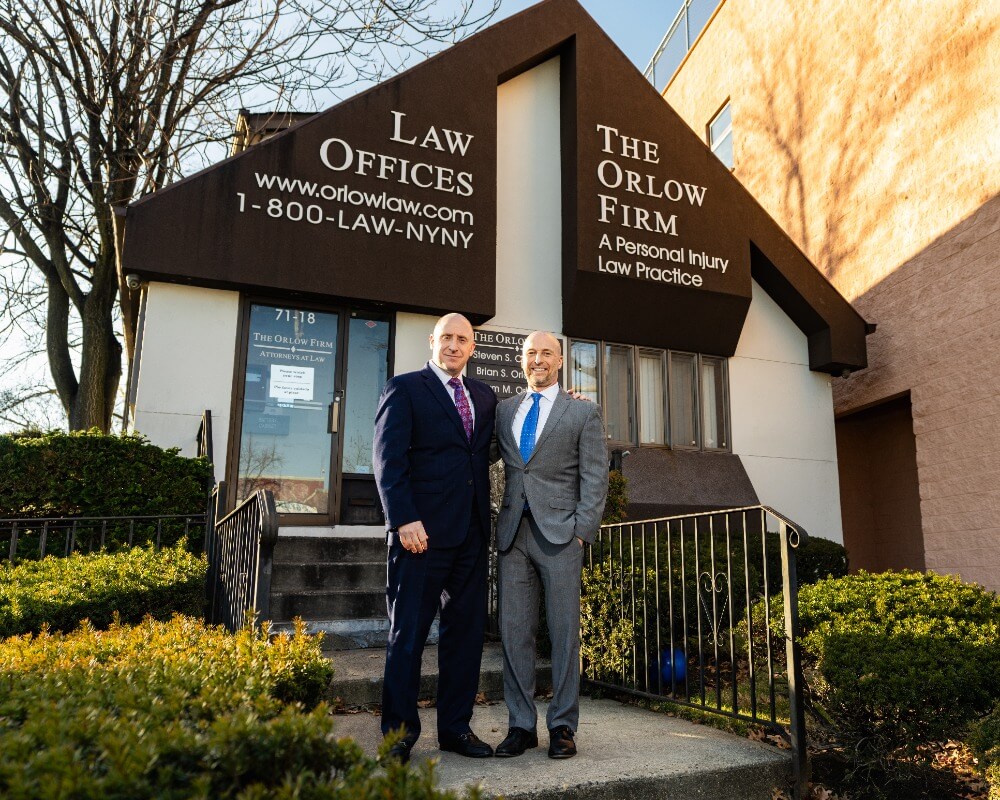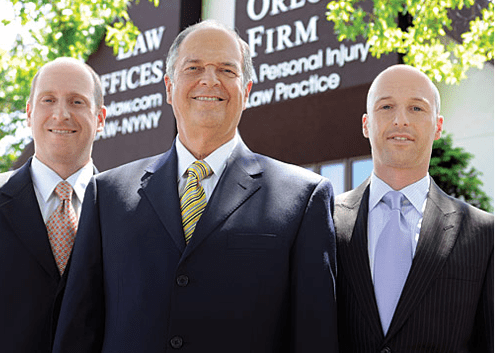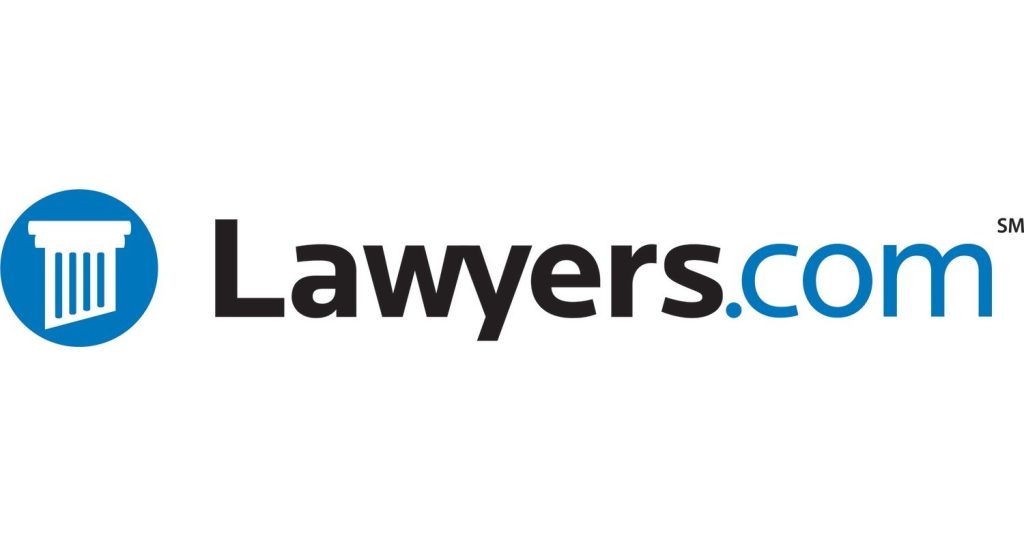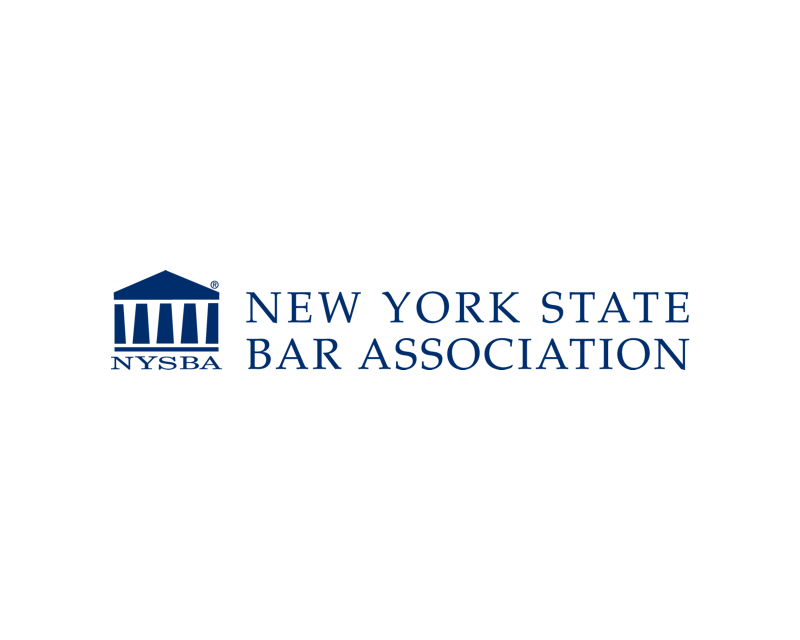How do you report a slip and fall accident in New York?
In New York, there isn’t an official “slip‑and‑fall form” like there is for car accidents. What you file—and where—depends on who owns or controls the property where you fell:
| Where the fall happened | What to file & where | Key deadline |
| City‑owned or NYC agency property (sidewalk maintained by DOT, park, public school, subway station, etc.) | Submit a Notice of Claim to the New York City Comptroller. The Comptroller accepts (a) PDF forms uploaded through the eClaim portal, (b) personal delivery, or (c) certified/registered mail. | Within 90 days of the accident (General Municipal Law § 50‑e). |
| Other municipal property (town, county, public authority outside NYC) | Serve that municipality’s Notice of Claim form on its clerk or designated agent, again within 90 days. New York State Unified Court System | 90 days |
| New York State‑owned property (SUNY campus, state office building, etc.) | File a Notice of Intention or verified Claim in the Court of Claims following Ct. Cl. Act §§ 10 & 11. New York State Unified Court System | 90 days for a Notice of Intention; 2 years to file the Claim itself (injury cases). |
| Private property or privately run store/office/apartment | Ask the manager/owner for their internal incident‑report form (most retailers and landlords have one). Fill it out on the spot and request a copy for your records. There is no statutory filing deadline, but filing immediately strengthens your case. | |
| Workplace (employee on the job) | Your employer must submit Workers’ Comp Form C‑2F to the Board; you should notify a supervisor in writing within 30 days (WCL § 18). |
Bottom line: Identify who owns the premises, complete that entity’s incident or Notice of Claim paperwork, and file it before the applicable deadline—90 days for any governmental entity and as soon as possible for private premises. Missing the right form or deadline can bar your claim. If you’d like help with this process, our NYC slip and fall lawyers are available for free case evaluations at (646) 647-3398.
Why You Must Report Right Away
Reporting a slip and fall accident as soon as possible is crucial for both legal and practical reasons. If there’s no official report, the property owner—or their insurance company—may later deny the accident ever happened. A timely report helps establish:
- Proof that the fall occurred on the premises
- The date, time, and location of the incident
- Initial details such as what caused the fall (e.g., wet floor, broken stair, icy sidewalk)
- That you took the incident seriously, not as an afterthought
In many cases—especially when public property or a government agency is involved—you’ll need to meet strict deadlines, such as filing a Notice of Claim within 90 days. Even for private property, early reporting creates a paper trail that can support your case and encourage faster insurance response.
Tip: If you’re physically unable to report it yourself due to your injuries, ask someone you trust to do it for you and get written confirmation that it was received.
First Steps at the Scene — Laying the Groundwork for Your Report
What you do in the moments right after a slip and fall can make or break your ability to file a successful claim later. Before you worry about legal forms or contacting insurance, it’s critical to notify someone in charge and start documenting everything while the evidence is still fresh.
- Find the person in charge
Locate a store manager, landlord, security guard, or site supervisor and let them know an incident occurred. Ask that they begin an official incident report.
- Request (and keep) a copy of that report form
Most businesses or building owners have a standard report they’re required to fill out. Request a physical or digital copy and confirm that it includes basic details like the time, location, and description of the hazard.
- Document the hazard in real time
Take clear photos or videos of the exact location, surface conditions, lighting, and anything that contributed to the fall. These images are vital, especially if the hazard gets cleaned up quickly afterward.
- Collect witness information
If anyone saw what happened, politely ask for their name and contact details. Eyewitness accounts help validate your report and counter any disputes later.
- Save physical evidence
Keep items like your shoes, torn clothing, or any objects that contributed to the fall. They may be useful during settlement negotiations or trial.
Taking these steps immediately after the incident ensures that your report is supported by solid evidence and that your account of what happened is clearly documented. The more thorough you are at the scene, the stronger your report—and your case—will be.
Not sure what to say or do after a fall? Call The Orlow Firm today at (646) 647-3398 for a free consultation. We’ll help protect your rights from day one.
Who to Notify After a Slip and Fall
Once you’ve taken immediate steps at the scene, the next key move is notifying the correct person or entity responsible for the property. This step creates a formal record that the incident occurred and puts the responsible party on notice that you may pursue a claim.
Here’s who you may need to notify:
- Private Businesses or Commercial Properties
Notify the store manager, building supervisor, or property manager. Chain stores and commercial landlords usually have internal procedures for incident reports—request that they complete one and provide you with a copy.
- Residential Landlords or Property Management Companies
If you fell in an apartment building or condo, report the incident to the landlord or managing agent. Follow up in writing (email or certified letter) to confirm the report was made.
- City-Owned or Municipal Property (e.g., sidewalk, park, subway, school)
Notify the appropriate New York City agency—such as the Department of Transportation (DOT), NYC Parks, or MTA—and file a formal Notice of Claim within 90 days.
- State Property (e.g., SUNY campus, state office building)
Notify the New York State Attorney General’s office and file either a Notice of Intention or a Claim through the Court of Claims.
- Workplace Injuries
If you were injured while working, report the fall to your employer or supervisor right away and ensure it’s recorded. Employers are required to submit a C-2F form to the Workers’ Compensation Board.
Failing to notify the right party—or missing the proper deadline—can seriously hurt your ability to recover compensation. Always confirm that your report has been received and documented.
Unsure who to notify or how to reach them? Call The Orlow Firm at (646) 647-3398 for a free case review. We can help make sure the right people are held accountable.
Filing an Incident Report
After notifying the responsible party, the next step is getting your fall documented through an incident report. This report becomes part of the case record and may be reviewed by property owners, insurance companies, and even the courts. It’s often the first written account of what happened—and a key piece of evidence.
What to include in the incident report:
- Date, time, and exact location of the fall (e.g., “front entrance of Store X near register 3”)
- Detailed description of the hazard (wet floor, loose tile, no warning sign, etc.)
- Description of your injuries (even if you’re not yet sure of the extent)
- Names of any witnesses
- What happened immediately after the fall (e.g., manager was notified, EMS called)
Where to file the report:
- For private property, fill out the location’s internal incident form and request a copy before you leave.
- For public property, the “incident report” takes the form of a Notice of Claim (municipal or state), which must be properly served and often notarized.
- For work-related falls, your employer submits Form C-2F to the New York Workers’ Compensation Board.
Be clear and factual in your report. Avoid guessing, exaggerating, or accepting blame. Stick to the facts and keep your wording consistent with any future legal or insurance claims.
Filing an official report strengthens your credibility and prevents the other side from claiming the incident never happened.
Need help with an incident report or legal filing? Call The Orlow Firm at (646) 647-3398 for guidance. We’ll help make sure your report is accurate, complete, and timely.
Gathering Photos, Videos, and Other Proof
An official report helps establish that a slip and fall occurred—but visual and physical evidence often carries more weight when it comes to proving negligence. The sooner you collect this evidence, the harder it will be for the property owner to deny responsibility or claim the hazard didn’t exist.
Key types of evidence to gather:
- Photos and videos of the scene
Take clear, timestamped pictures of the exact location where you fell. Include the hazardous condition (like spilled liquid, ice, broken flooring), surrounding area, lighting conditions, and lack of warning signs.
- Footwear and clothing
Save the shoes you were wearing and any clothing damaged in the fall. These can help show you weren’t at fault and may be examined in a legal investigation.
- Medical records and visit logs
Even if you don’t feel seriously hurt, get checked out and keep all visit summaries, X-rays, and doctor’s notes. These provide a medical link between the fall and your injuries.
- Witness statements
If someone saw you fall or noticed the hazard beforehand, ask them to write a brief statement or text you what they saw. Be sure to save their contact information.
- Maintenance or incident logs
In some cases, a business or agency may have records showing that they were aware of the hazard and failed to fix it. These can be requested later through legal discovery.
Securing this evidence early helps preserve the truth—before cleanup crews erase the scene or memories fade.
Worried the evidence won’t hold up? Call The Orlow Firm at (646) 647-3398. Our legal team knows how to gather, preserve, and use slip and fall evidence to support your claim.
Reporting Sidewalk or City-Owned Property Falls
If your fall happened on a New York City sidewalk, park, public school, subway station, or any city-managed property, you’ll need to follow special procedures to report it. These aren’t just suggestions—they’re legal requirements that must be met in order to sue the City of New York or one of its agencies.
How to report a fall on city property:
- File a Notice of Claim
This is a formal legal document notifying the City that you intend to seek compensation. You must file it within 90 days of the accident. The form must include:
- Your name and address
- Date, time, and location of the fall
- Description of how the injury happened
- Type of injuries sustained
- The damages you’re seeking
- Your name and address
- Where to file
The City of New York accepts Notices of Claim through:
- Its online portal (eClaim system)
- In person at the Comptroller’s Office
- By certified or registered mail
- Its online portal (eClaim system)
- What happens next
After filing, the City may hold a 50-h hearing (similar to a deposition) where you’ll be asked questions under oath. Only after this process can you file a lawsuit in court.
Filing a police report or telling a city employee isn’t enough. The Notice of Claim is the official method to preserve your right to legal action.
Unsure if the property is city-owned or how to file your Notice of Claim? Call The Orlow Firm at (646) 647-3398. We’ll help you identify the correct agency and file your paperwork on time.
Reporting Workplace Falls (Workers’ Compensation Claims)
If you slipped and fell while on the job in New York, your case is handled differently from other slip and fall incidents. Rather than filing a personal injury lawsuit right away, you’ll usually need to go through the Workers’ Compensation system, which has its own reporting requirements and deadlines.
Here’s what you must do:
- Notify your employer immediately
Under New York Workers’ Compensation Law § 18, you must provide written notice of the accident within 30 days. While verbal notice might be accepted in emergencies, written notice (such as an email, memo, or incident form) is much safer.
- Employer files Form C-2F
Your employer is required to submit a Form C-2F (Employer’s Report of Work-Related Injury/Illness) to the New York State Workers’ Compensation Board within 10 days of learning about your injury.
- You file your own claim
To start your benefits, you must submit Form C-3 (Employee Claim Form) with the Workers’ Compensation Board. This can be done online or by mail.
- Seek medical treatment from an authorized provider
Make sure the doctor treating you is approved by the New York Workers’ Compensation Board. Their records will help validate your claim.
Unlike other types of property-related slips and falls, workplace accidents are generally not pursued through personal injury lawsuits—unless a third party (like a contractor or property owner) was responsible. But reporting the injury properly is key to receiving wage replacement and medical coverage.
Confused by the Workers’ Comp process? Call The Orlow Firm at (646) 647-3398. We’ll explain your rights and help you take the right steps to protect your claim.
Deadlines & Legal Time Limits in New York
One of the most important things to understand about reporting a slip and fall in New York is that time is not on your side. Strict legal deadlines—known as statutes of limitations and notice periods—can bar your claim if you miss them, even by a single day.
Key deadlines to know:
- Private property (e.g., stores, apartment buildings):
New York’s general personal-injury limitation period is three years under CPLR § 214, but you should still report the incident immediately. - City or Municipal Property:
You must file a Notice of Claim within 90 days of the incident (General Municipal Law § 50-e). Then, you must file the actual lawsuit within 1 year and 90 days from the date of the accident (GML § 50-i).
- State-Owned Property:
You must file a Notice of Intention within 90 days (optional but recommended), and then file your claim in the Court of Claims within 2 years (Court of Claims Act § 10).
- Workplace Falls:
You must notify your employer within 30 days (WCL § 18), and typically have 2 years to file a Workers’ Compensation claim.
Why these deadlines matter:
If you miss any of these time limits, the court may dismiss your case automatically—even if your injuries are severe and your evidence is strong. Acting quickly also helps preserve physical evidence and makes it easier to track down witnesses.
Worried about a deadline? Contact The Orlow Firm at (646) 647-3398. We can help determine exactly which deadlines apply to your case and make sure your claim is filed on time.
Common Mistakes to Avoid When Reporting a Slip and Fall
Reporting a slip and fall may sound straightforward, but even small mistakes can have a big impact on your ability to recover compensation. Whether you’re filing an incident report, a Notice of Claim, or speaking with an insurance adjuster, accuracy and caution are critical.
Here are common mistakes to avoid:
- Not reporting the fall right away
Delays can make it seem like the fall wasn’t serious—or didn’t happen at all. Always notify the property owner or manager immediately and follow up in writing.
- Failing to request a copy of the report
Once an incident report is filled out, ask for a copy before leaving. If they won’t give you one, take a photo of it or write down exactly what was included.
- Admitting fault or downplaying the incident
Avoid saying things like “I wasn’t watching where I was going” or “I’m probably fine.” These statements can be used against you later. Stick to the facts without speculation or self-blame.
- Leaving out important details
Make sure your report includes what caused the fall (wet floor, loose tile, etc.), where it happened, and whether anyone witnessed it.
- Assuming a verbal report is enough
A spoken notification doesn’t always hold up in court. Always create a paper trail—email, written forms, or certified mail are best.
- Missing deadlines
Government-related claims require a formal Notice of Claim within 90 days. Even private cases can be weakened if you wait too long to act.
Even honest mistakes can give property owners and insurers an excuse to deny your claim. Knowing what not to do is just as important as knowing what steps to take.
Worried you’ve already made a reporting error? Don’t panic—call The Orlow Firm at (646) 647-3398. We may still be able to help correct the issue and strengthen your case.
What Happens After You File the Report
Filing a report—whether it’s an internal incident form, a Notice of Claim, or a Workers’ Compensation submission—is just the beginning of the legal process. What happens next depends on where the fall occurred, who owns the property, and how severe your injuries are.
Here’s what typically happens next:
- Investigation by the property owner or insurance company
Most businesses or government agencies will conduct an internal review. This may involve reviewing surveillance footage, inspecting the area, or interviewing staff.
- Contact from an insurance adjuster
If a claim is opened, an insurance adjuster may reach out to ask questions or request a recorded statement. Be cautious—these conversations are often designed to minimize liability.
- Medical treatment and documentation
As you continue receiving treatment, keep all records, bills, and receipts. These will be key when calculating damages.
- Potential settlement offer
In some cases, the insurance company may offer a quick settlement. Be careful: early offers are often far lower than what your case is worth.
- Legal action or litigation
If no fair settlement is reached—or if your case involves a government entity—you may need to file a formal lawsuit. This includes gathering evidence, taking depositions, and possibly going to trial.
Throughout this process, having proper documentation and legal guidance can make a major difference in the outcome of your case.
Ready to take the next step after filing your report? Contact The Orlow Firm at (646) 647-3398. We’ll review your situation for free and help you build a strong case for compensation.
When to Call a New York Slip and Fall Lawyer
While not every slip and fall requires legal action, many do—especially when serious injuries, unsafe property conditions, or uncooperative property owners are involved. If you’re unsure whether you need a lawyer, the safest move is to at least schedule a free consultation.
You should speak with a lawyer if:
- You suffered a serious injury (fracture, head trauma, surgery required, etc.)
- The property owner or business is denying the incident happened
- You were injured on public property and need to file a Notice of Claim
- The insurance company is delaying, denying, or lowballing your claim
- You’re being blamed for the accident
- You’re missing work or have ongoing medical expenses
- You want to make sure you meet all legal deadlines
Slip and fall cases often hinge on nuanced legal issues like “notice,” building codes, or sidewalk liability rules. An experienced lawyer can help gather the right evidence, negotiate with insurers, and—if necessary—file a lawsuit to protect your rights.
Waiting too long to get legal help can weaken your case or cause you to miss critical deadlines. The sooner you involve a lawyer, the better your chances of a successful outcome.
Think you may have a case? Call The Orlow Firm at (646) 647-3398 or contact us online for a free, no-obligation consultation. We’ll explain your options and help you make informed decisions.
FAQs About Reporting Slip and Fall Accidents in New York
Still have questions? You’re not alone. Below are answers to some of the most common questions people ask when trying to report a slip and fall in New York.
- Do I need to call the police after a slip and fall? Not usually. Police reports are more common in car accidents or criminal incidents. However, if you’re seriously injured and need emergency medical help, calling 911 is appropriate. Otherwise, notify the property manager and request an incident report.
- Is an incident report the same as a legal claim? No. An incident report just documents what happened. Filing a legal claim—like a Notice of Claim against a government agency or a personal injury lawsuit—is a separate step that often follows the initial report.
- What if I didn’t report the fall right away? You should still report it as soon as possible. Delay can hurt your case, but it doesn’t automatically disqualify you. Provide a written account to the property owner or manager and speak with an attorney immediately to protect your rights.
- Can I report a fall anonymously? No. A valid incident report or legal claim must include your name and contact information. Anonymous reports carry little legal weight and won’t preserve your right to sue.
- What if the property owner refuses to take a report? Document your attempt in writing (e.g., send an email or certified letter), and gather as much evidence as you can on your own. Then contact a lawyer—especially if your injuries are serious.
Clear answers help you take the right steps from the beginning and avoid missteps that could cost you your case.
Have a question we didn’t cover? Reach out to The Orlow Firm at (646) 647-3398. Our team is here to answer your questions and protect your rights from day one.
Contact The Orlow Firm for Help
Reporting a slip and fall accident the right way can mean the difference between a denied claim and a successful recovery. With strict deadlines, complex rules for public property, and pressure from insurance companies, it’s easy to feel overwhelmed—especially while dealing with injuries.
At The Orlow Firm, we’ve helped numerous New Yorkers navigate the slip and fall reporting process and fight for the compensation they deserve. From identifying who’s responsible to filing the right paperwork on time, our legal team handles the details so you can focus on healing.
Whether your fall happened in a store, on a sidewalk, at work, or on city property, we’ll help ensure nothing falls through the cracks. We offer free, no-obligation consultations, and you pay nothing unless we win your case.
Don’t wait. Call The Orlow Firm today at (646) 647-3398 to get started. Let our family fight for yours.










